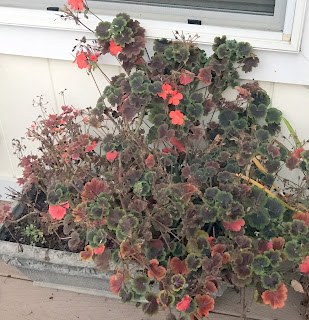| Rufus keeping warm by the woodstove. 11.12.18 |
After the wood is burned, I collect the ashes and spread on the yard and garden. I avoid spreading ashes on areas where acidic soil is preferred, such as near chestnut trees, or near rhododendrons, or where I will plant potatoes next season. Those plants do not appreciate alkaline conditions or wood ashes.
This is where a soil test is handy. Our soil was quite low in calcium, then magnesium. Wood ashes are alkaline, so can buffer an acidic soil. Their major component is calcium carbonate - so they have an effect similar to lime, although not as strong as lime. Wood ashes contribute calcium to soil, then potassium and phosphorus, and some magnesium. Ed Hume recommends spreading ash around trees and shrubs. I avoid around acid-loving plants, like chestnut trees, rhododendrons, azaleas, or evergreens, as well as where I will grow potatoes next season. Ed Hume recommends 1 gallon of dry wood ashes per square yard of garden, or 1/4 to 1/2 inch on lawns and flower beds. Farmer's Almanac recommends 20 pounds per 1000 square feet, which would be 2 pounds per 100 square feet, or 1 pound per 50 square feet - a 5 foot by 10 foot bed. I apply less, figuring I don't want to overdo it. I just use a dusting on the vegetable beds for next year, and on lawn around fruit and specimen trees. Less than the recommend 1/4 inch, so I doubt any problem will occur.
My philosophy is that the trees and garden are already goring nicely. By adding ashes, I'm returning some of the minerals that trees and vegetables have removed from the soil. That will help growth in future years. Our soil is high in potassium, the next ingredient that is high in wood ashes, so that aspect is not needed. The magnesium and phosphorus content of ashes is not much, but would be helpful.as well.







